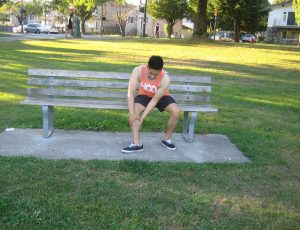Hyperextended knee is a condition where the knee is stretched or twisted in a way that the ligaments are torn and result to severe pain and discomfort while walking. Even gentle bending causes severe pain.
[youtube url=”https://www.youtube.com/watch?v=VfVgWgw3NdU”]Hyperextension of the knee happens when the knee joint extends beyond the normal range of motion and severely stressing one or more of the 4 major ligaments found in the joint. This condition is usually common among people playing contact sports such as soccer and football as well as skiing that causes misalignment of the joint.
This condition can affect both children and adults. On the other hand, children have soft and developing bones, thus the cause might be a minor fracture due to excessive stretching of the ligaments or tendon when hyperextending the knee. A hyperextended knee can be mild or severe.
Symptoms of a hyperextended knee
- Sudden pain, muscle weakness and swelling of the area
- Tenderness below the kneecap
- Bruising and joint instability
- With chronic hyperextension of the knee, soreness and swelling can develop
- Sensation of “giving way” or “catching” of the knee
- Atrophy or muscle loss
- Impaired way of walking due to knee stiffness and pain

Sudden pain, muscle weakness and swelling of the area - Pain behind the knee
- A popping sound can be heard immediately after the injury
- Fluid accumulation within the joint
Causes
- A strong blow to the front of the knee or a strong kick to the leg while playing sports such as soccer causes the knee to hyperextend.
- Sudden stop or landing from a jump with a locked knee
- Chronic hyperextension caused by laxity of the joint
Treatment
- Immediately after the injury, avoid putting weight on the affected leg.
- Get plenty of rest especially the affected area. Wear a knee brace and use crutches to help the affected person move around and prevent placing weight on the affected area
- Apply an ice pack on the affected knee. Wrap ice cubes in a towel and place it on the area for at least 10-15 minutes at least 3 times in the first 2 days to lessen the pain and swelling.
- Elevate the leg above the level of the heart when lying down to minimize swelling.
- Wrap a compression bandage around the affected knee to lessen the swelling and stabilize the knee. Avoid wrapping it too tightly to prevent disruption of the circulation in the area.
- After a few days of initial treatment, begin simple exercises needed to restore the strength of the knee and improve the range of motion.
- Take over-the-counter anti-inflammatory and pain medication such as ibuprofen to lessen the pain and inflammation.
